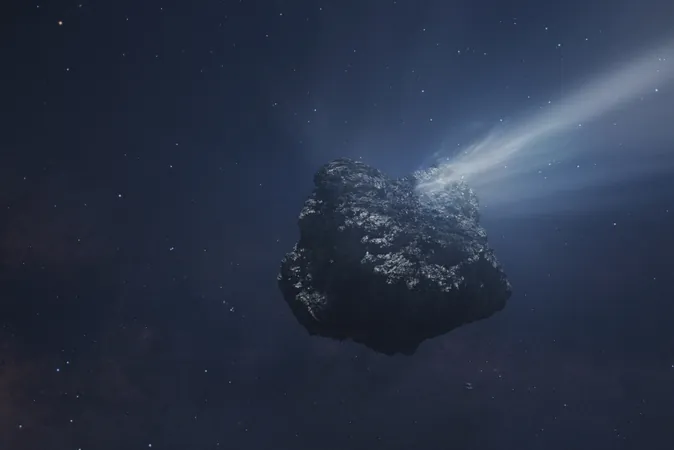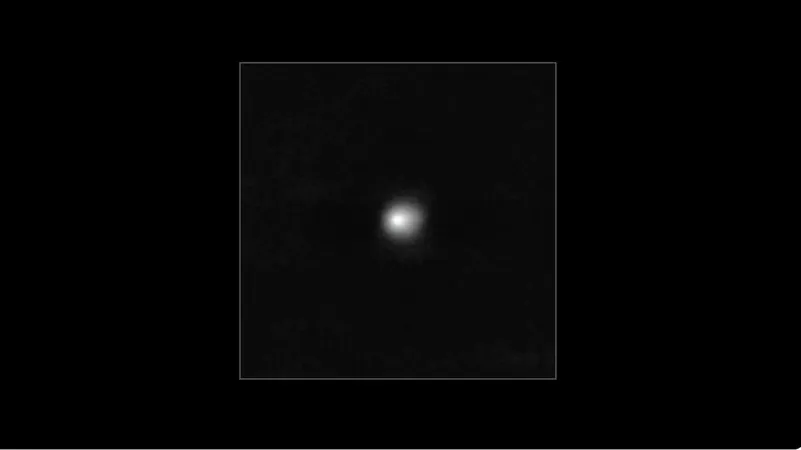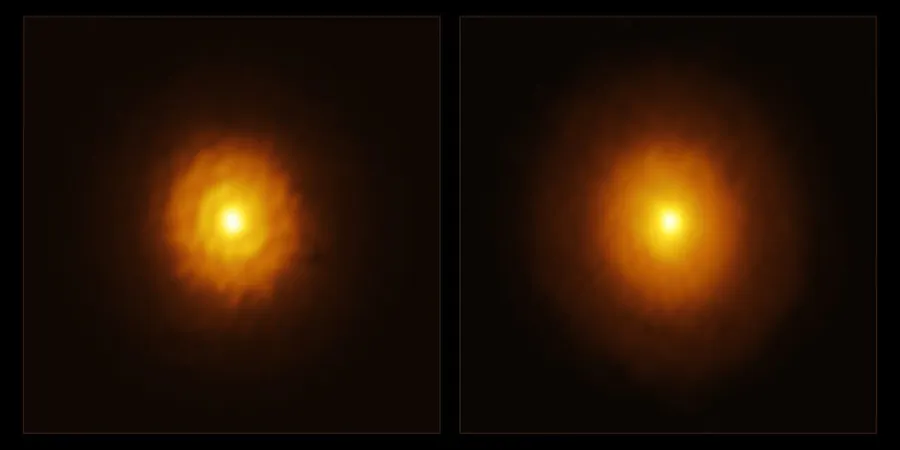
Enormous Oort Cloud Comet Unveils Its Mysteries Through ALMA's Advanced Vision
2025-06-17
Author: Benjamin
Unprecedented Discovery: The Giant Comet C/2014 UN271
Astronomers have made an astonishing breakthrough by detecting breath-taking molecular activity in the colossal comet C/2014 UN271, also known as Bernardinelli-Bernstein. This remarkable comet, the largest and second most distantly active ever observed from the Oort Cloud, was spotted over 16.6 times farther from the Sun than Earth, well on its way to Neptune.
A Behemoth Among Comets
C/2014 UN271 is a true giant, measuring a staggering 85 miles (140 km) in diameter—over ten times larger than most known comets! Until this discovery, the behavior of such frigid, far-flung celestial bodies remained largely a mystery.
Unraveling the Mystery of Cometary Activity
Thanks to the powerful Atacama Large Millimeter/submillimeter Array (ALMA) in Chile, researchers detected complex jets of carbon monoxide gas erupting from the comet’s nucleus, unveiling the first-ever direct evidence of what fuels its activity so far from the Sun. Lead author Nathan Roth from American University and NASA stated, “These measurements provide insight into the workings of this enormous icy world. We’re observing explosive outgassing patterns that raise fascinating questions about how this comet will behave as it journeys towards the inner solar system.”
The Power of ALMA: Revolutionizing Comet Research
ALMA's cutting-edge technology captured light from carbon monoxide in the comet’s atmosphere, along with thermal emissions, allowing scientists to focus on this faint signal from such a distant object. Building on previous observations, the latest findings confirmed C/2014 UN271 as the largest Oort Cloud comet ever identified, solidifying its enormous stature in the cosmic arena.
A Glimpse into Cosmic Origins
The detection of molecular outgassing is a monumental milestone for this record-setting comet, offering a rare overview of the chemistry and dynamics of celestial objects from the outer solar system. As C/2014 UN271 moves closer to the Sun, researchers expect the sublimation of frozen gases, which will further illuminate the comet's primitive composition and the solar system’s early history. Such revelations are key to understanding the origins of Earth and its water, as well as the potential for life-supporting habitats beyond our planet.









 Brasil (PT)
Brasil (PT)
 Canada (EN)
Canada (EN)
 Chile (ES)
Chile (ES)
 Česko (CS)
Česko (CS)
 대한민국 (KO)
대한민국 (KO)
 España (ES)
España (ES)
 France (FR)
France (FR)
 Hong Kong (EN)
Hong Kong (EN)
 Italia (IT)
Italia (IT)
 日本 (JA)
日本 (JA)
 Magyarország (HU)
Magyarország (HU)
 Norge (NO)
Norge (NO)
 Polska (PL)
Polska (PL)
 Schweiz (DE)
Schweiz (DE)
 Singapore (EN)
Singapore (EN)
 Sverige (SV)
Sverige (SV)
 Suomi (FI)
Suomi (FI)
 Türkiye (TR)
Türkiye (TR)
 الإمارات العربية المتحدة (AR)
الإمارات العربية المتحدة (AR)